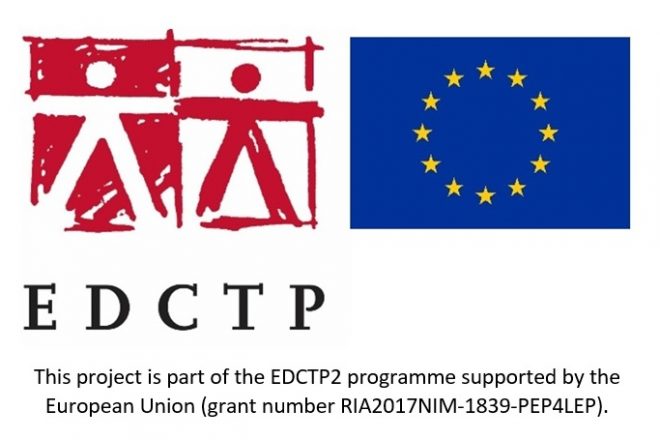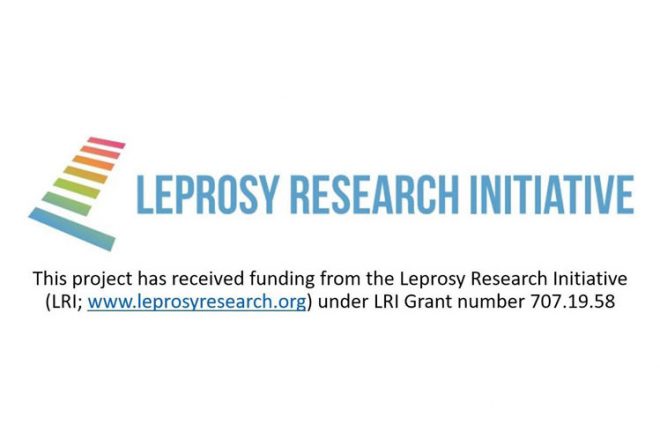Newsletter PEP4LEP – May 2022
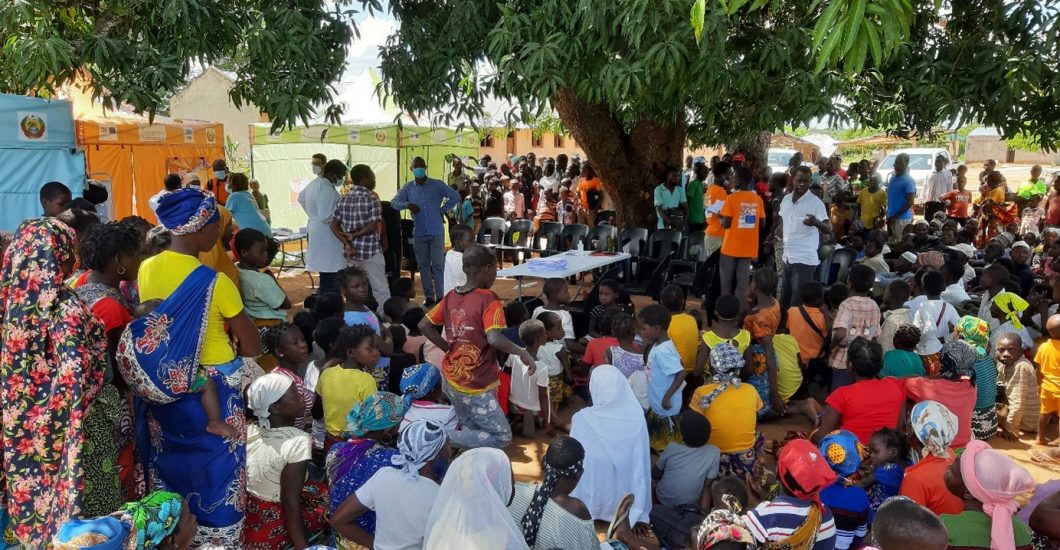
Dear all,
The PEP4LEP project is making great progress. Fortunately, the COVID-19 situation is calmer in most countries, which makes life and work easier, including the organisation of skin camps. Also, it is possible to travel again. In this newsletter you will read updates from the three countries, the experiences with the first skin camps in Mozambique during the field visit from Thomas Hambridge (Erasmus MC PhD student & data manager) and Anne Schoenmakers (NLR IO project manager & medical advisor) to Nampula, reports on the ILEP conference and LRI spring meetings, and a new member to the PEP4LEP community will introduce herself.
Updates from the country offices
Ethiopia:
The PEP4LEP project is going well in Ethiopia. The project team trained 122 health professionals and by cascading the training to the peripheral level, the team also trained 125 community health workers.
Since the start of the PEP4LEP project implementation, 3,063 contacts have had their skin screened and 2,684 of them received SDR-PEP through 36 skin camps (intervention 1). Through the health centre based intervention (intervention 2), 29 index-patients were recruited and 89 of their household contacts were screened. One of the indicators to compare the effectiveness of both interventions is the number of diagnosed leprosy patients; accordingly, 26 and 5 new leprosy patients have been detected through intervention 1 and 2 respectively.
Tanzania:
The implementation of the PEP4LEP project in Tanzania is progressing well, following the approved protocol while taking COVID-19 precautions into account.
In summary, from December 2019 to April 2022, 4,142 contacts were screened and 3,807 received SDR-PEP in the skin camp intervention. During these community events, 24 new leprosy patients and 2,283 other skin conditions were diagnosed. In the health facility intervention, a total of 113 index patients were recruited; 426 contacts were screened and 407 received SDR-PEP. In this second intervention, 6 new leprosy patients and 87 patients with other skin conditions were diagnosed.
Mozambique:
After the launch of intervention 2 (health facility-based household contact screening), data collection started successfully. This year the preparation of skin camps was delayed due to the COVID-19 situation, rainy season (roads were interrupted and it was not possible to go to the communities for skin camp) and a cyclone that hit Nampula in March.
Fortunately, by the end of March the Mozambiquan team prepared the first two skin camps, as the rain had stopped. On April 4th, 2022, we received a team (Anne and Thomas) from NLR Amsterdam and Erasmus MC with the purpose of supporting the Mozambique team with the first skin camps and monitoring data collection and management.
On April 8th and 12th, the first 2 skin camps took place in Cazuzo (Murrupula district) and Meconta (principal town of Meconta district) linked to a total of 10 index patients. In Cazuzo, under a mango tree, almost 570 participants visited the first skin camp (index patients, invited contacts and community members in general who received information regarding the skin camp intervention via the community radio). In Meconta, more than 620 participants showed up, and it is very important to note that even people living 20 km away participated. People who did show up but were not part of the target groups (invited neighbors) were not officially included as study participants, but they could still receive skin screening and skin medication if needed. In both events combined, 247 of the 277 invited community contacts received SDR-PEP, 10 new leprosy patients were diagnosed and over 100 community members had other skin diseases.
In intervention 2, Mozambique has included 78 index patients. A total of 292 household contacts were screened, of which 259 received SDR-PEP and 9 were diagnosed with leprosy.
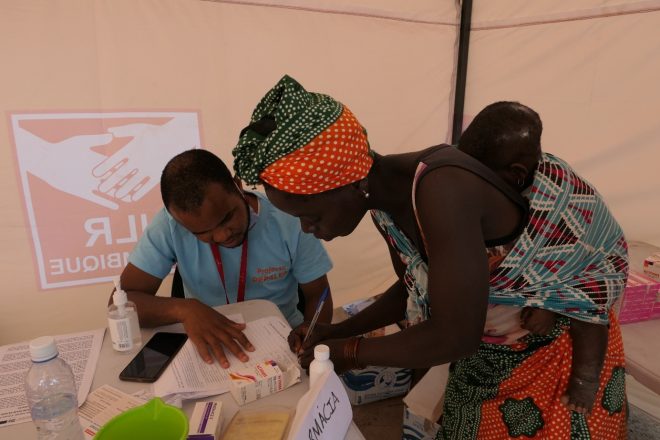
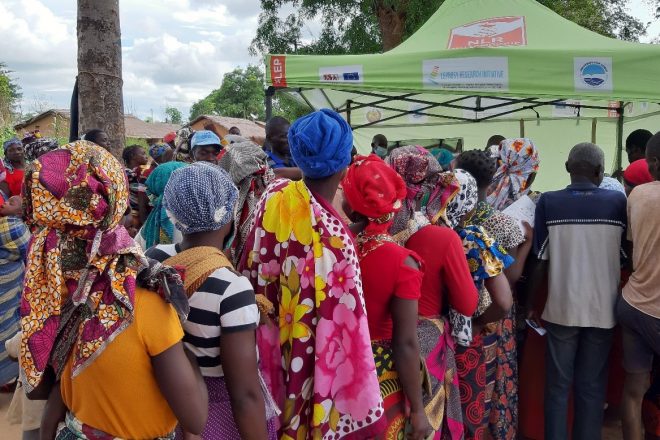
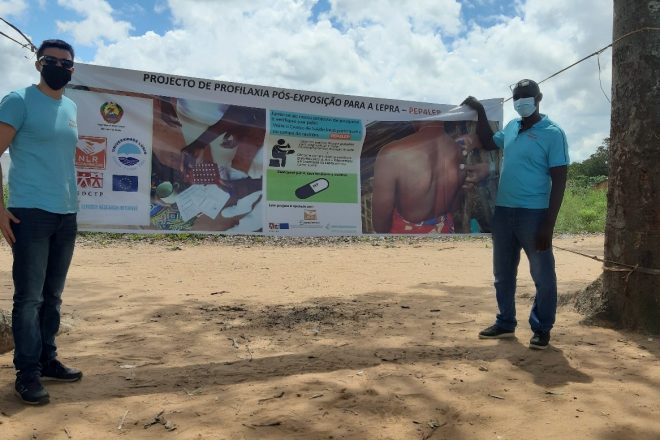
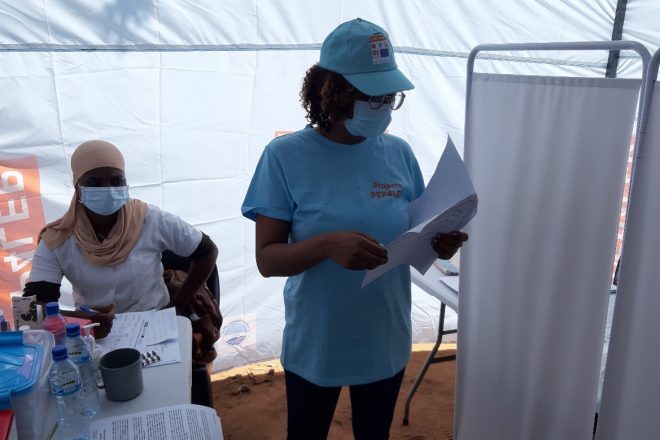
LRI Spring meeting & ILEP Conference
During this year’s virtual LRI Spring Meeting 2022 in April, the Ethiopian PhD student Ephrem Mamo presented on behalf of the PEP4LEP consortium. We would like to congratulate him on the great job he did!
A joint presentation on the PEP4LEP skin camps was given by the NGO consortium partners during the virtual ILEP Conference 2022 in March. Over 200 people joined the session! On the photo below on the right, programme manager Kitesa Debelo is explaining about the skin camps in Ethiopia.
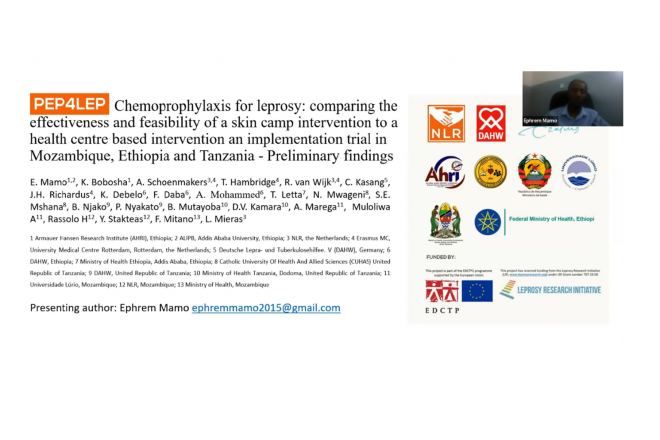
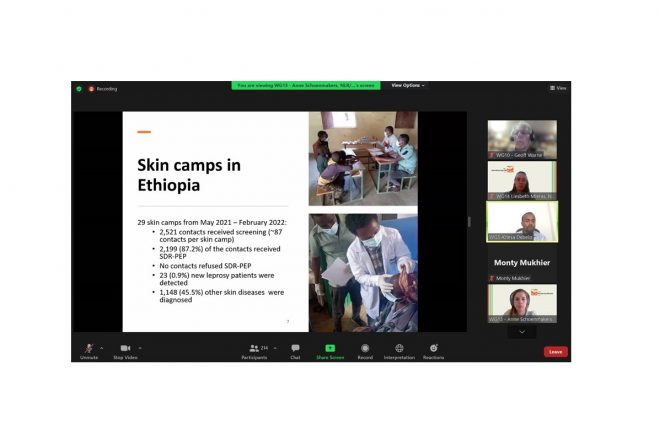
Experiences from the first Mozambican skin camps
Points to take into account by Helder Rassolo
During the first two skin camps in Mozambique, valuable lessons learned were gathered. We would like to share these with you:
- The volunteers and community radios are very useful for mobilization. It can be used in future leprosy control activities, increasing community involvement.
- The invitation cards we created were very helpful. By using these cards, we knew who a targeted contact was and who was not. This helped us in crowd management: making sure that all participants were directed towards the tents so they could be registered, screened and receive SDR-PEP.
- In Mozambique, several index patients live in the same community. Therefore, per skin camp, multiple index patients and their contacts from one community can be included. Due to the huge number of participants in the first two skin camps, we designed a strategy of selecting fewer index patients (less than 4) per skin camp, to have no more than 300 participants/ contacts visiting each skin camp (the average number of community contacts per index patient n this project is estimated at 100).
- It is necessary to take food and beverages for the staff working in the skin camp, there is often very limited time to go somewhere to eat and the skin camps are located at remote locations without shops or restaurants being nearby for lunch breaks.
- In some communities it will be necessary to stay and sleep after the activities because of the number of participants attending (in the two skin camps we left after 7 pm after starting very early in the morning).
- Communities are very interested in taking SDR-PEP and to be treated for other skin diseases.
- With the skin camps we discovered that diseases such as vitiligo, albinism, tinea capitis and pityriasis versicolor are very common and unknown by most of the community members.
Rifampicin shortage – still an urgent problem
Unfortunately, we continue to face a rifampicin shortage. Impurities detected in the production phase as well as production delays since the COVID-19 pandemic are affecting the global availability of medication. The situation is especially pressing for Ethiopia and Mozambique, as loose rifampicin is not available on their national markets. These countries completely depend on import and are in urgent need of new 300mg rifampicin capsules early this Summer. The PEP4LEP team hopes to soon come up with a solution for this challenge. Do you have any ideas on how to overcome this issue in the upcoming weeks? Please share it with us via pep4lep@nlrinternational.org
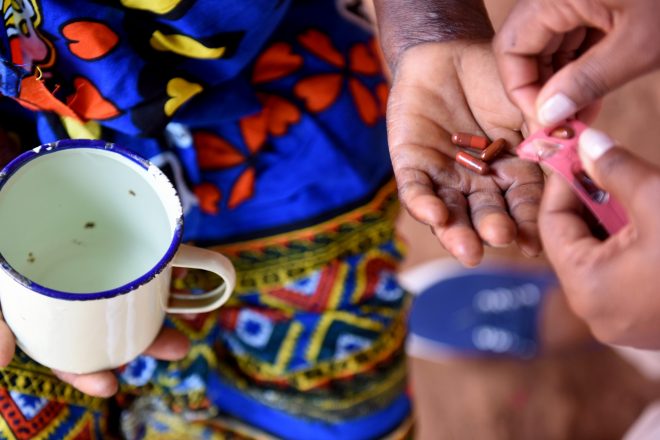

Introduction of Frouke Procee
Tropical doctor, family physician and currently being trained in public health.
“Recently I joined NLR IO to replace Robin van Wijk during her maternity leave. For me this is a perfect opportunity to see and learn from such a wonderful NGO as part of my advanced public health training. My specialization is tuberculosis control. Within the PEP4LEP project I see so many similarities between tuberculosis and leprosy. Both leprosy and tb are caused by a mycobacterium (leprae vs tuberculosis). Both are (highly) endemic in tropical areas and related to poverty. Both are still the cause of extensive morbidity and even mortality. Patients of both diseases face stigma and exclusion. All of that, while both diseases are curable with long courses of antibiotics.
In the Netherlands tuberculosis is a rare disease. Similar to leprosy, to reach elimination, preventative therapy is being used to prevent close contacts of contagious tb patients from becoming sick with tuberculosis. In high endemic countries preventative treatment is much less common. The difference is that in tuberculosis control preventative treatment takes at least 3 months of daily rifampicin combined with isoniazid. In leprosy control, preventative treatment can be done with a single dose of rifampicin! That makes it so much more feasible.
I am really impressed by everything I saw, heard and read about PEP4LEP. Three different countries, with different challenges, but very dedicated and motivated people that go a long way to strive for a world with zero leprosy. PEP4LEP will definitely contribute to that. I am glad I could join and learn so much from all of you. Thank you.”
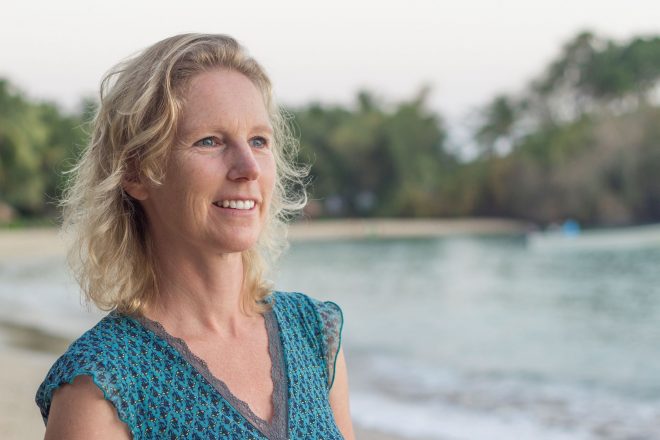
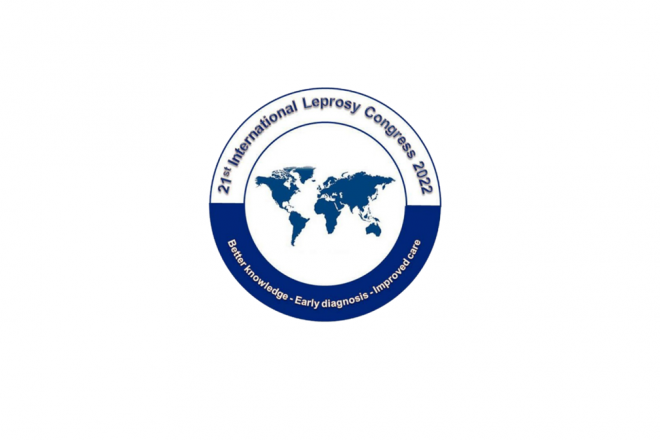
Looking forward
From November 8th – November 11th the 21st International Leprosy Congress 2022 will be held in Hyderabad, India. We are all looking forward to meeting again and watch our PhD students present their papers and sharing the preliminary results of the PEP4LEP project. An informal side meeting will be set up.
Register and submit abstracts in time! www.Ilc-india2022.com
